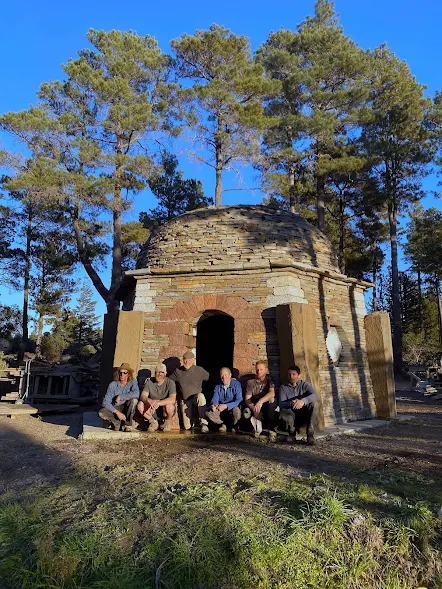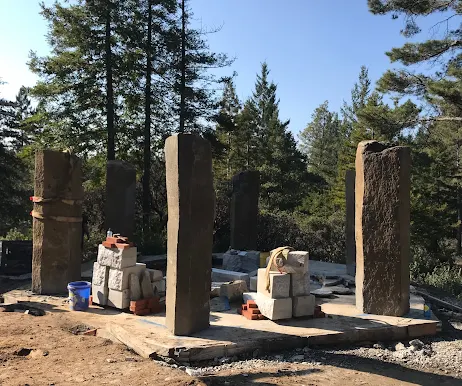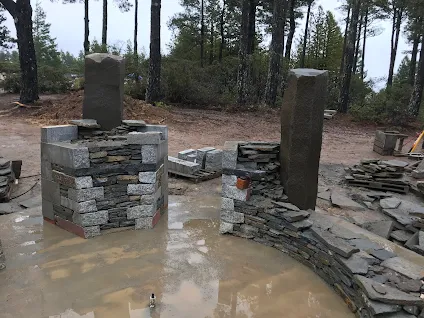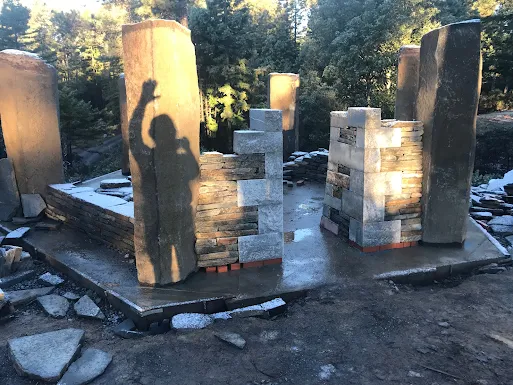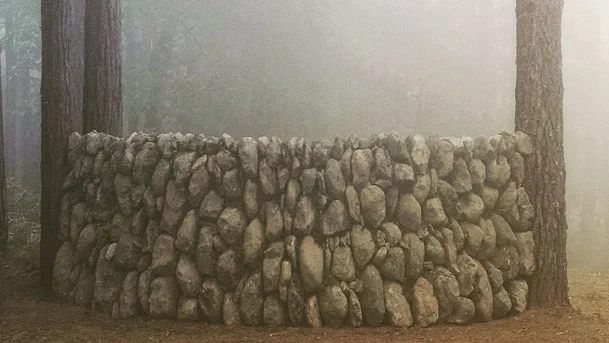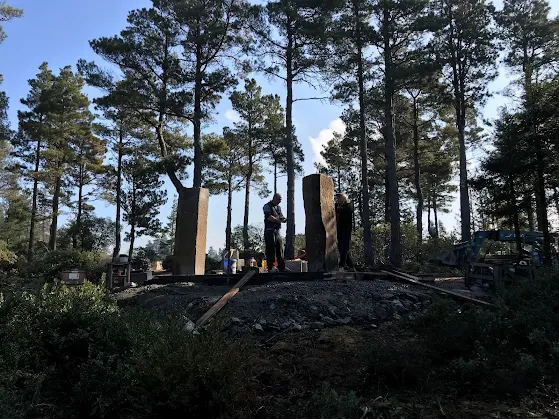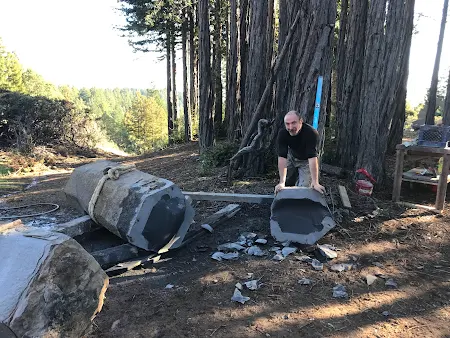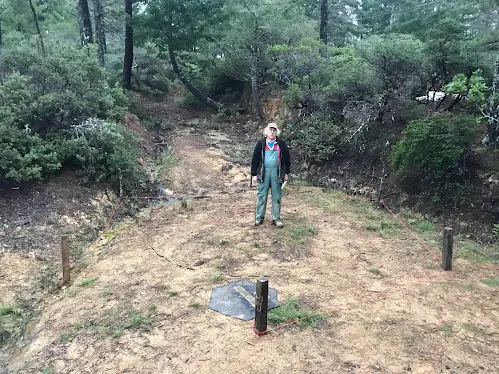The Voussoirs? Sean and I found it harder to remember how we actually did them. We have more photos of the making and placing of them than any other aspect of the project and yet can't quite work out what was going on.
Sean writes “ I think my own trepidation and associated stress levels were at a build high with them. The voussoirs were going to be made from pre-cut blocks of granite from art city… for ‘simplicity’ we needed one size block to suit all voussoirs and another for the springers, there was little room for manoeuvre or mistakes.
Initially there was a lot of head scratching… we had started the build - and so had settled on actual dimensions in terms of height and width of opening, before we settled on the arches. Having established batters was important because with increased height there was going to be a point where they were actually getting wider as the curve exceeded the 1:10 of the outside. So I sat down at home in Wales and calculated what maximum widths would be, and quickly realized that the keystone (who’s top would be the highest point of the arch and hence the widest point) would need to be longer than the rest for example.
During design it was decided that there could be separate sets of voussoirs - front and back- that interlocking them (making them throughs) would be far to complicated so we chose to have them present a straight seam when viewed from underneath, an so each would have a slightly different length.
I drew scale drawings, made all sorts of calculations and notes based on projected sizes provide by John on sketch-up and eventually came up with a size for the voussoir blocks, allowing for removal of waste for shaping plus a bit of wiggle room in case we needed to amend anything- psychic, or just tuned into the way we work, can you actually plan how to ‘work on the hoof’? I even drew a scale curve for the springers to make sure that when placed at right angles to the door the tail of the springer would still be outside the curve so that it could actually be cut from a given block -basically this inside wall edge was much longer than the exposed edge on the curved inside… the straight outside presented no such problem. "
"One thing I was sure of from the outset was that however hard I/we tried the two openings would not be perfect there would inevitably be some variation of widths cross and/or through as it turned out one was close to perfect width wise, but with a slight difference through, the other was closer though but with an inch or so difference across. These all complicated the build in terms of centring the forms, having to prop the odd voussoir slightly struggling to get the pre-cut blocks to accommodate the springers, introducing all sorts of imperfections."
"When it came to processing the voussoirs it was decided to utilize one sawn edge and cut the other face at an angle and adjust the base to the correct angle to make life easier. Much sawing, kerfing, chiselling and grinding to get rid of the waste and produce another clean edge. Nasty, noisy, dusty if my stress levels were at a high, I think John was probably heading off the chart, his sticking at it and often driving it at this point is one of the greatest and yet invisible aspects of the whole build. In the end I think the clean cuts and the eventual motif set everything else off and was well worth the angst.
Back to the actual process, once the springers were cut the block was placed on the former on which I had marked the curve of the inside face by eye – pure guesswork given that the radius of the curve would in effect be changing as height was gained, but again as long as it was not obviously too straight or overly curved it would be imperfect but I hoped would look right as long as it ‘flowed’."
"Initially I couldn’t remember how the angle of the second face was determined. For the springers I think I ‘simply’ aimed a straight edge (level) at the centre of the circle for the arc of the former, but that was a foot or so below the actual bottom edge of the form and marked the line with that. Clearly not a tenable approach for the whole process. I had started putting these notes together a couple of days ago and then I had a restless night full of voussoirs, dust and nonsense which include John’s beard – possibly instigated by my own current attempts to grow one- , but clearly in the middle was a wooden template. This was used to get the second angle, with the base slightly cut to get a better angle onto the former. It didn’t all go according to plan. "
"All the voussoirs were cut for the front and placed before further processing (except the keystone) – that is batter of the face – a process repeated (more or less in tandem) for the inside.
I can’t remember how I marked the curve of the face on the inside voussoirs, clearly it wasn’t with my profile as the wooden form stuck out and was in the way… maybe a template? I have a picture of the keystone in place with markings… maybe I aimed at this… One edge would certainly have been marked by scribing against the previous stone, it is clear that there was quite a bit of variation in the end. When viewed close up the curve gets distorted, and the voussoirs are not of a uniform height and extrados does not necessarily parallel the intrados. All sorts of imperfections but it wasn’t worth trying to iron out the minor discrepancies given the dangers inherent in 'killing' a stone."


